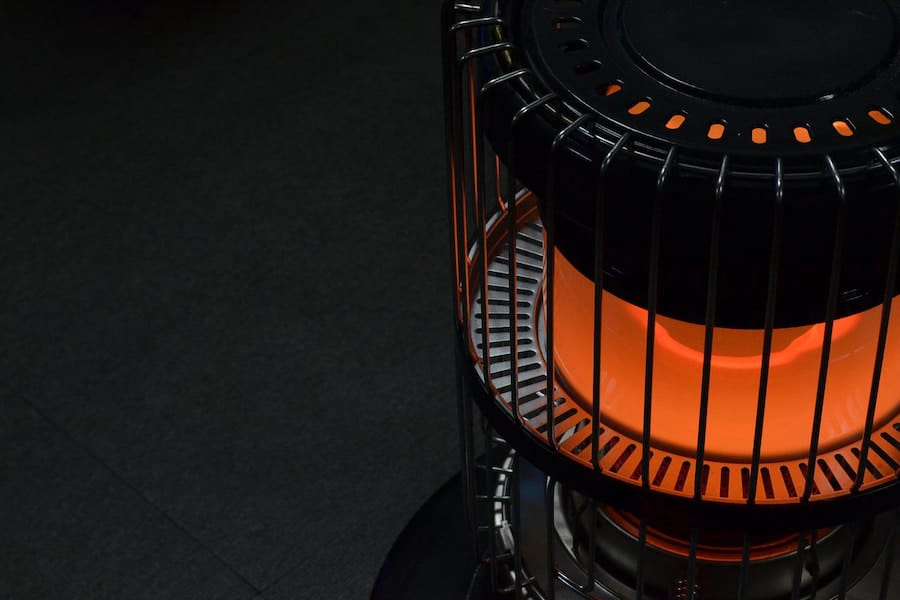If you buy something through a link in our posts, we may get a small share of the sale.
One of the most important aspects of brewing is temperature control. This is especially true when working with a conical fermenter. If the temperature is not balanced, it can impact the taste of your beer. Therefore, understanding how to heat a conical fermenter is essential for any brewer.
Contents
How to Heat a Conical Fermenter
The best way to heat a conical fermenter is to use a fermenter heating pad. Place the heating pad on the outside of the fermenter and wrap it around the fermenter. Ensure that the heating pad is set to the proper temperature and does not touch any plastic material. The average fermentation temperature is between 42-52 degrees Fahrenheit.
If you do not have a heating pad, you can place the fermenter in a warm water bath. Fill a sink or tub with warm water and place the fermenter in it. Monitor the water temperature to ensure it stays around 42-52 degrees Fahrenheit. You may need to add more hot water to the bath as it cools down.
Once the fermenter is heated, you can add your wort and yeast. Seal the fermenter and let it sit for the duration of fermentation. Check on the fermenter periodically to affirm that the temperature is still consistent. You don’t want to let the temperature get too high or too low, as this can impact the taste of your beer or introduce off-flavors.
Other Methods of Heating a Conical Fermenter
If you are a newbie in brewing, you might not know that there are other methods of heating a conical fermenter. The following are seven other methods that can be used to heat a conical fermenter:

Use a Space Heater
A space heater is a great way to heat a small room or space. If you are fermenting your beer in a closet or storage area, you can use a space heater to heat the area. This will help to keep the fermentation temperature consistent. Just be sure to monitor the space heater so that it does not get too hot.
The advantage of using this device is that you can control the temperature more easily. In addition, it is less likely to overheat the fermenter making it an ideal choice for those who are new to brewing and want to be extra careful with their personal conical fermenters.
Use a Heat Lamp
A heat lamp is another way to heat a small space. This is especially useful if you do not have a space heater. Heat lamps can be found at most hardware stores, and using them is pretty straightforward.
To use a heat lamp, simply place it in the area where you are fermenting your beer. The heat from the lamp will help to keep the area warm and consistent. It is important to monitor the heat lamp so that it does not get too hot.
Use Home Brew Heat Belts
Homebrew belts work almost similar to heating pads; however, they provide heat in a more controlled manner. These belts are placed around the fermenter and help provide the heat along the sidewall in an even manner. Most of these belts are rubber with a heating element inside.
To use a homebrew heat belt, simply wrap it around the fermenter and plug it in. The heat from the belt will help to keep the fermenter warm. Make sure to monitor the fermenter’s temperature so that it does not get too hot.
The advantage of using a homebrew heat belt is that it is less likely to overheat the fermenter. In addition, it is easy to use and does not require any special setup. All you need is to plug it in, and you are good to go.

Use a Heat Stick
A heat stick is a small, portable device that can be used to heat a small space. These devices are similar to space heaters, though much smaller. Heat sticks are great for fermenting beer in a small space such as a closet or cabinet.
To use a heat stick, simply place it in the area where you are fermenting your beer. The stick will be able to heat the area and keep the fermentation temperature consistent.
The advantage of using a heat stick is that they have a thermal cutoff switch that will turn the device off if it gets too hot. You do not have to worry about the device overheating and damaging your beer.
Use a Heat Wrap
A heat wrap is a large, flat piece of material that is sometimes referred to as a heating blanket or electric blanket. It’s a safe and easy way to heat up your fermenter. You need to plug it in, wrap it around the fermenter, and turn it on to the desired temperature.
The temperatures are usually very consistent with a heat wrap. You can also find wraps that have a thermostat built-in. You just set the required temperature, and it will turn on and off as necessary to maintain that temperature.
One advantage of using a heat wrap is that it evenly heats the entire vessel. This is important because you want to avoid hot spots when fermenting. Hot spots can cause your yeast to produce off-flavors.
Benefits of Heating Your Fermenter
The temperature of your fermenter is crucial to the quality of your beer. If the temperature is too cold, the yeast will not be active, and fermentation will take longer. Therefore, you need to make sure that the fermenter is in a consistent and warm environment for your equipment to deliver excellent results. There are several benefits to heating your fermenter:
- Faster Fermentation: One of the main benefits of heating your fermenter is that it will speed up the fermentation process. This is because the yeast is more active at warmer temperatures.
- Higher Alcohol Content: Another benefit of heating your fermenter is that it will result in higher alcohol content. This is because the yeast produces more alcohol at warmer temperatures.
- Better Flavor: Heating your fermenter will also result in better flavor. This is because the yeast produces more flavorful compounds at warmer temperatures. The hops will also be more effective at higher temperatures.
- Improved Efficiency: Heating your fermenter will also improve the efficiency of fermentation. This is because the yeast will be more active and will work more efficiently.
You can also use your conical fermenter to dry hop.

Frequently Asked Questions
What Happens to Beer Fermenting Too Warm?
Too warm of a fermentation temperature will increase the activities of the yeast. This can lead to a number of problems, such as off-flavors, higher alcohol content, and shorter shelf life.
Is It Bad to Ferment Beer Too Cold?
Yes, fermentation that is too cold will result in a number of problems, such as stuck fermentation, off-flavors, and longer fermentation times. The yeast works best under warm temperature conditions.
How Do You Keep Beer From Freezing During Fermentation?
One way to keep the beer from freezing during fermentation is to use a heating pad or heat wrap. You can also ferment the beer in a warm place, such as an attic or closet.
What Temperature Kills Yeast?
The temperature that kills yeast ranges from 130 to 140 degrees Fahrenheit. At these temperatures, the yeast cells are damaged and can no longer reproduce. Ensure your fermenter is never heated above these temperatures.
Conclusion
Heating your fermenter is a great way to improve the quality and flavor of your beer. There are several different ways to heat your fermenter, and each has its own advantages. Choose the method that best suits your needs and budget and one you can be sure to use consistently.

